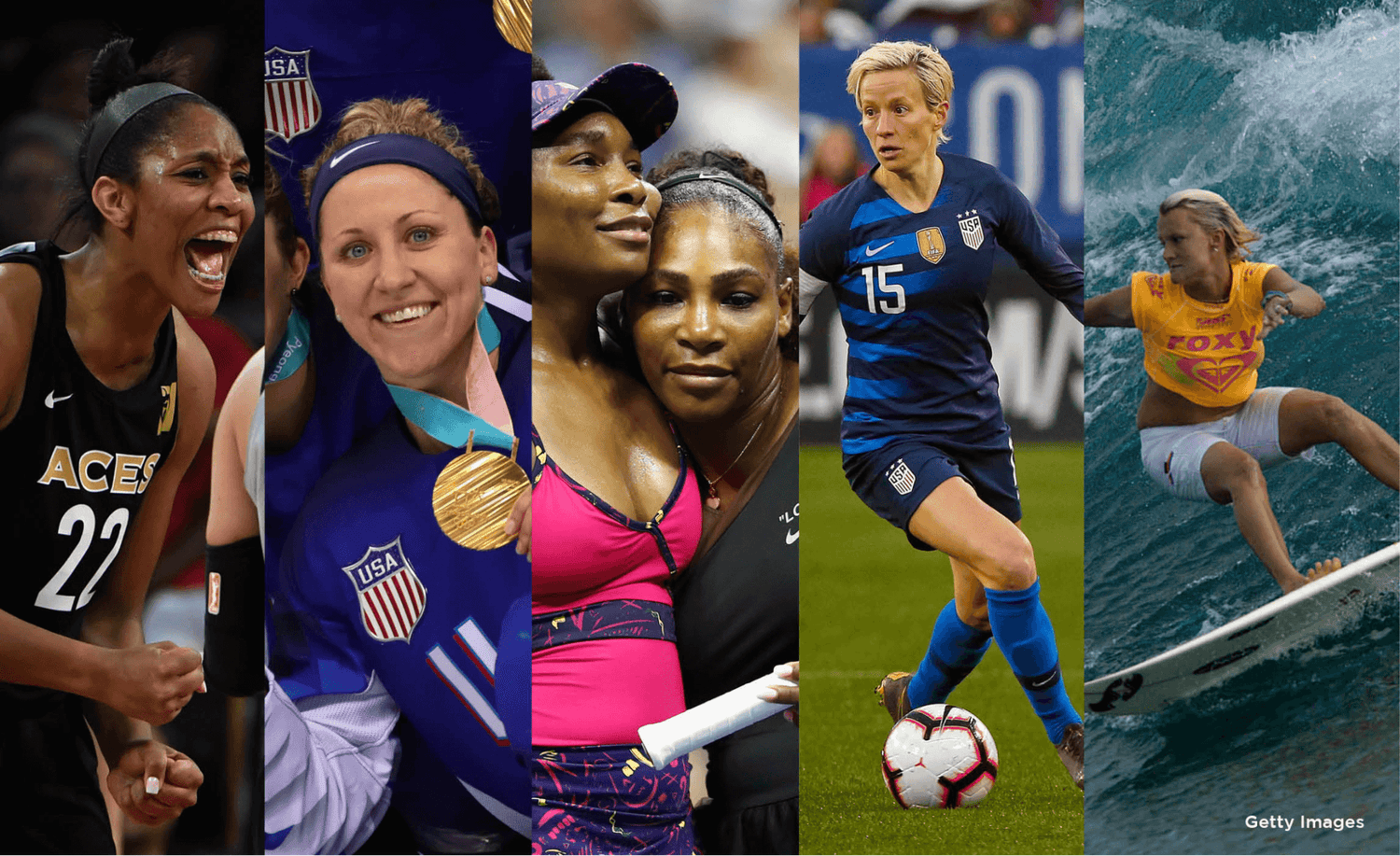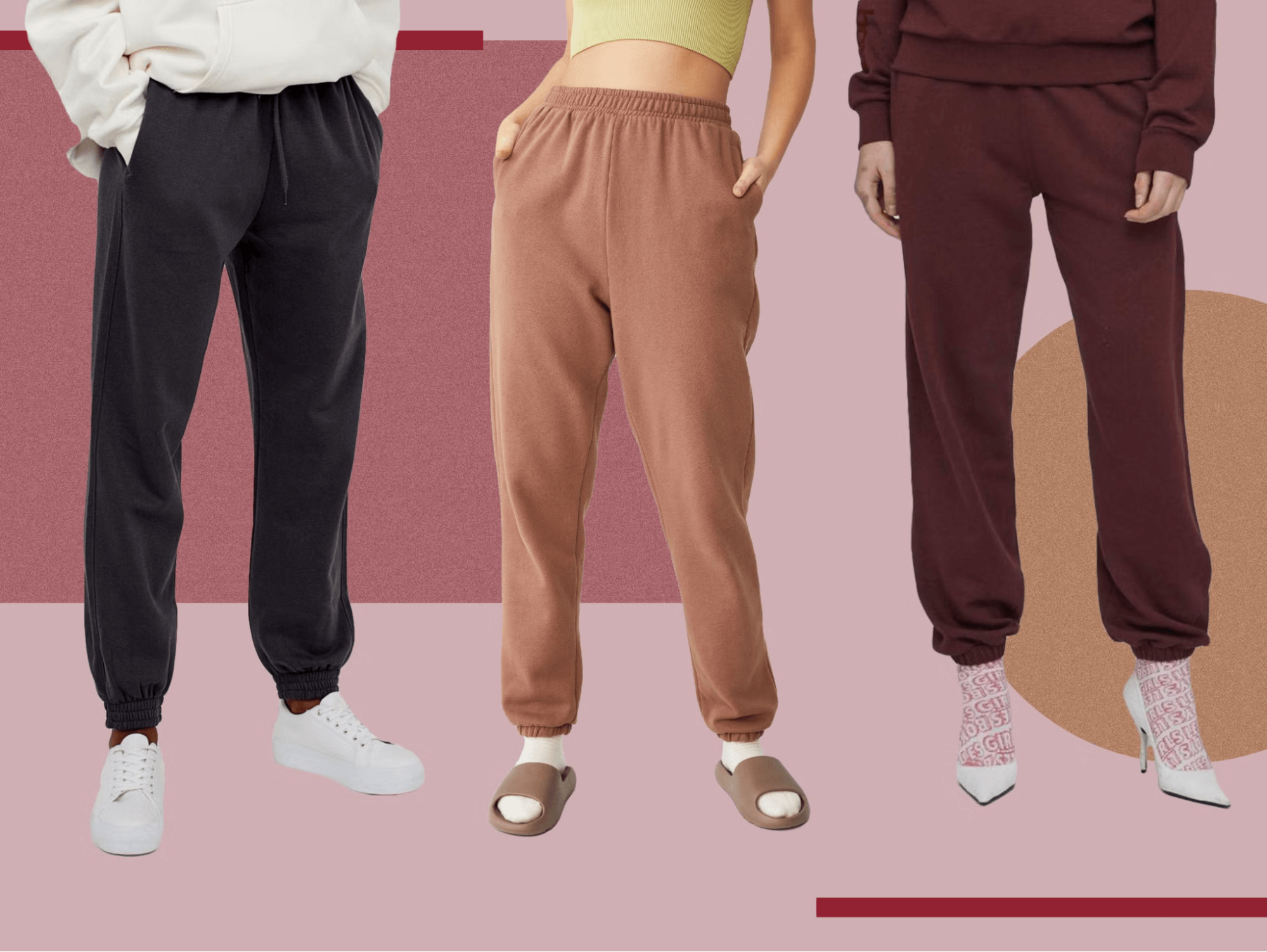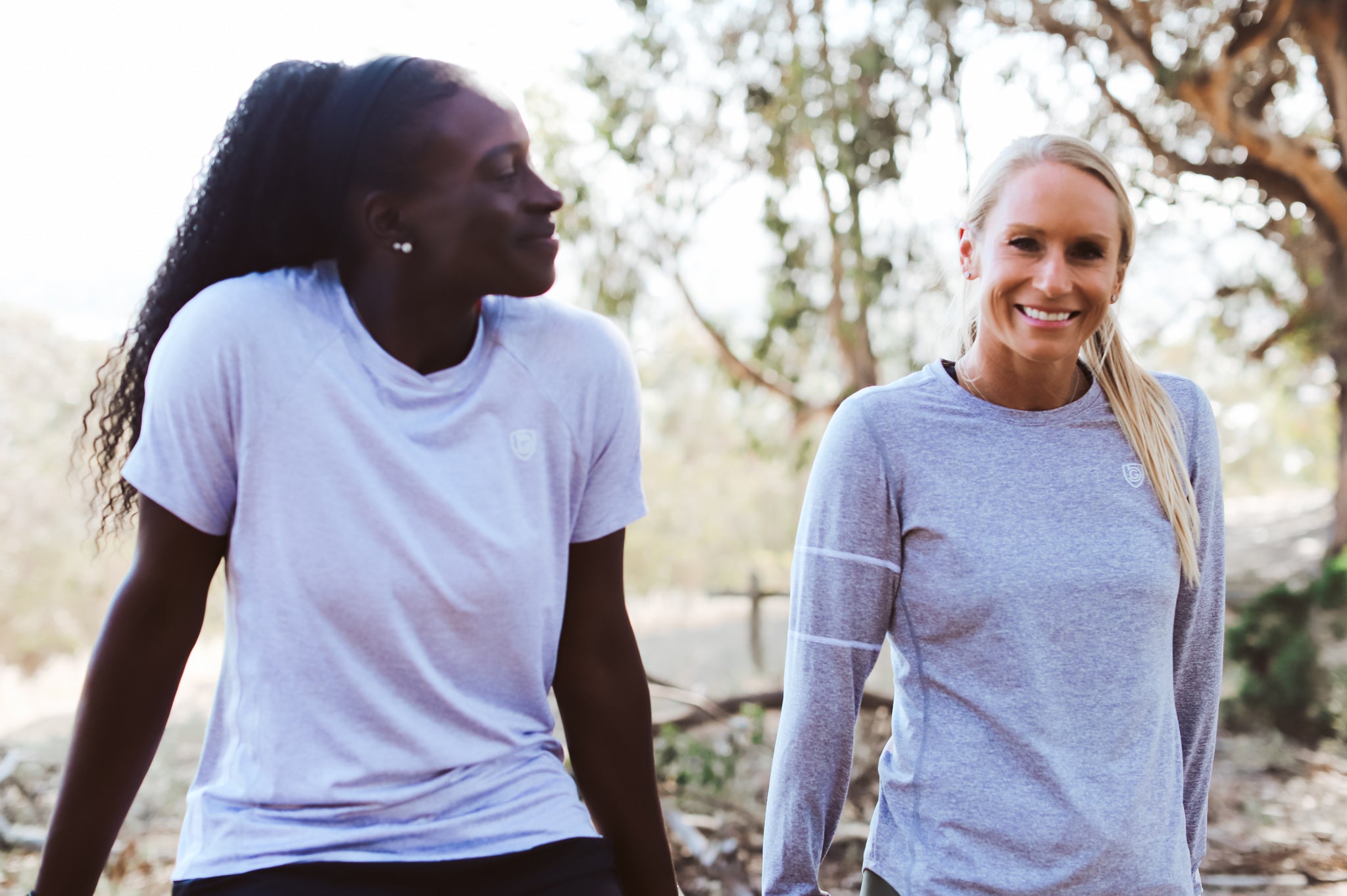Discrimination against women still happens in 2024, even in sports, and it’s important to know how to fight it!

When Congress passed Title IX in 1972 mandating equal American women’s collegiate sports, high school and collegiate participation in American women skyrocketed by almost tenfold over four decades with progress in professional and Olympic sports too, yet here we are. Congress passed the Equal Pay Act almost sixty years ago. Title IX has been around for nearly fifty years, and there’s still a gender discrepancy in pay and opportunities.
What’s going on? Some point to physical differences, but when you see how differently the industry represents and invests in women who work equally hard, gender discrimination in sports looks more complicated.
How are Females Discriminated Against in Sporting Activities?
Spot the signs of how women are treated differently in sports compared to men.

Gender discrimination in sports happens at every level. Women and girls get fewer athletic opportunities, scholarships, and funds. College women’s coaches earn less than men.
The gap widens when women’s sports receive dramatically less coverage, sponsorships, and marketing. Women have less say in athletic organization governing bodies’ boards and in coaching.
It’s a cyclical, systemic problem and imbalances throughout the industry perpetuate gender inequality in sports. How wide is the sports gender gap , anyway? The numbers make a case for systemic discrimination of female athletes.
Women’s Power and Leadership Positions in Sports
Reports show half of publicly funded national governing bodies’ boards were under 25% female . Women held 18% of qualified coaching positions and 9% of senior coaching positions.
Women comprised 30% of Olympic governing bodies and 16.6% of National Olympic Committees, and international Sports Federations were 18% female.
Women’s Sports Investment and Representation
Women’s underrepresentation in sports leadership translates to less investment, including funding, marketing, promotion, and media coverage. In one report, 0.4% of sports sponsorship funds went to women.
What’s more, women athletes get 4% of media sports coverage despite being 40% of athletes. Another study revealed local networks and SportsCenter allocated less than 2% of broadcasting to women’s sports.
Olympic Games primetime coverage of American women’s basketball’s fifth consecutive gold medal in 2012 lasted less than thirty seconds . Compare that to a half-hour covering U.S. men’s basketball’s second consecutive gold. This seems outrageous from a marketing/ratings perspective, considering 84% of sports fans express interest in women’s sports .
Yet, similar patterns affect college athletics, where institutions spend 24% of athletic budgets on women. Colleges allocate a third of scholarship budgets and 16% of recruiting budgets to women. College women’s team coaches earn 63 cents on the dollar.
Consequences for Female Athletes
Top Reasons Why Women Are Discriminated Against
There’s no doubt that women are discriminated against in sports, and there are a slew of reasons as to why this occurs so frequently.

Many people don’t see these inconsistencies as a problem, giving this explanation for prevalent gender discrimination in sports. Learn more about the reasons why women are oftentimes discriminated against no matter the type of sport they play.
The Stereotypical Reason
On average, men surpass women in raw physical abilities, making men’s sports more entertaining and profitable, but some say sexual dimorphism in humans is real. And accepting biological reality is a far cry from embracing harmful, outdated attitudes towards women. It doesn’t mean they’re weak, fragile, or should only be mothers and homemakers.
Men’s genetic advantages include hormones, metabolism, lower body fat, larger hearts, aerobic capacity, muscle mass, distribution, and muscle fiber structure. Men tend to run faster, jump better, and have more grip strength. The average woman has 33% less lower body strength and 40% less upper body strength.
The fastest woman, Florence Griffith Joyner’s 100-meter dash record wouldn't have qualified for the men’s 2016 Olympic race. Overall, the average performance difference between men’s and women’s Olympic events remains a solid 10% . That’s why we differentiate sports by sex, but here’s where things derail biological reasoning for gender discrimination against female athletes.
The Real, Underlying Reasons are Systemic
Men and women athletes who make equal effort diverge by roughly 10% in running and jumping, and women are 60-70% as strong. Then why does the pay, funding, media coverage, promotion, and sponsorship gap exceed the physical disparity enormously? What do physical traits have to do with the lack of women in leadership? It doesn’t add up.
The true root of discrimination of female athletes is disproportionately low numbers of women with power and influence behind the scenes. When few women have a seat at the table, women athletes at every level often get less money , less promotion, less airtime, less hype, less attention from fans, and ultimately less revenue.
With sports being so commercialized, corporate sponsorships compound the problem. We end up with the highest-paid male soccer player making $88 million while the highest-paid female player earns $2.8 million.
What the Law Says About Gender Discrimination in Sports
How are women recognized in women’s sports and what can be improved within the judicial system.

Title IX dictates equal opportunities for participation in women and equal contributions to men’s and women’s college programs. The Equal Pay Act mandates men and women must be paid equally working under identical conditions for the same employer doing the same job with equal effort, skill, and responsibility. This prevents unfair competition and employee wage suppression.
Examples of Female Discrimination in Sports
U.S. Soccer
25.4 million people watched the 2015 Women’s World Cup final, the U.S.’s most-viewed soccer match. The USWNT win earned more money for U.S. Soccer than USMNT who made 11th place, but the American women’s team earned a fraction of the men’s pay.
The USWNT sued the U.S. Soccer Federation, and president Carlos Cordeiro resigned. A judge dismissed the case in spring 2020, but the American women’s team is appealing.
WNBA
2021 NCAA Tournament
Eastern Washington University
Brown University
FIFA Board
Quotes From Real Female Athletes on Discrimination in Sports
It’s important to read more about discrimination in female sports, especially straight from the players themselves. Here are some quotes from female athletes and their views on the discrimination and pay gap in their sport compared to the average male athlete.
“We absolutely do not get promoted as our male counterparts do. When you put millions of dollars into marketing athletes and allowing fans to get to know a player, they develop a connection with someone. How is anyone going to get to know me or any of my colleagues if we aren’t marketed as much?” - Washington Mystics’ Elena Delle Donne
“I’m the highest-paid fighter not because Dana and Lorenzo wanted to do something nice for the ladies. They do it because I bring in the highest numbers.” - Ronda Rousey , UFC Hall of Famer
"I think payment needs to move away from gender. It needs to be about: 'How hard is this athlete—not female—working?'" - Alana Nichols , three-time paralympic winner
"The pay gap for winning a World Cup is extremely big: $36 million for men versus $2 million for women. It's a tough thing to swallow knowing that we sacrifice just as much, if not more." - Carli Lloyd , USWNT
"We got $2 million for winning the World Cup and had to split it up amongst the group. Whereas the U.S. men's team got $8 million after losing in round 16… We're doing whatever we can to use our platforms… We want people to pay more attention. We want to put women's football on the map." - Ali Krieger , USWNT
How to Evaluate Whether Females are Discriminated in Sporting Activities?
Spotting the signs of discrimination can help give women a better chance to be recognized in their male-dominated sport.

The U.S. Equal Employment Opportunity Commission has a guide to identify sexual orientation and gender discrimination with parameters for discriminatory employment practices and policies and harassment.
College athletes should know Title IX violations include unequal equipment/supplies, game/practice scheduling, travel/per diem allowances, tutoring, coaching, athletic facilities, medical facilities/services, housing/dining, publicity, support services, and recruitment.
What to Do When You Experience Gender Discrimination in a Sporting Event?
If experiencing discrimination as a female athlete, act quickly and document as much as you can.
Here are guides to help you understand employment terms and conditions, laws, your rights, actions to take, and what to expect:
HR reporting
Filing a grievance
Protest
Obtaining your personnel file
Lawsuit
Contacting the EEOC at 1-800-669-4000 or their website
Your options in schools and universities:
Legal counsel
Know the school’s policies
Report to a school official
Office of Civil Rights Complaint
Civil court
What We Can Do to Stop Discrimination Against Women?
It’s important to take action when necessary to stand up for your rights as a woman on or off the field!

Sports should empower the best versions of ourselves. Athletes and fans can work together for better money, representation, participation in women, and attitudes towards women.
Athletes can keep standing up, encouraging women and girls to be resilient. Young athletes embody the future of sports and depend on today’s women and leaders for better pay, investment, and leadership opportunities.
Women who are in male-dominated sports benefit from exposure in proximity to men, demonstrating male and female fans want to see women play and succeed. So athletic institutions should know investing in women athletes will pay off. Once leaders accept female influence and nurture passion for women’s sports to bring everyone together , we’ll all win.
Make sure to support our advocacy at GoalFive !
FAQs About Discrimination Against Women in Sports
Know the common questions people ask when it comes to the difference between how women are treated in sports compared to men.

Get to know the common FAQs when it comes to discrimination in women’s sports in order to understand more about this frequent issue and how to fix it.
Why Do People Consider Women's Sports Lesser than Men's?
How are Women Underrepresented in Sports?
What Sport has the Most Gender Inequality?
Why Are Women's Sports Not as Popular?
What’s Your Opinion? Have You Experienced or Witnessed Gender Discrimination in Sports?
What can bring women together to combat this issue and grow as individuals looking for equal rights?

There are many instances where women have experienced discrimination not only in sports, but also in other instances in life. Whether it is walking down the street, or even at your job, discrimination and harassment against women is a real problem that still continues even in 2024.
While it is prevalent all across the world, it is also common in sports where it can happen to not only major athletes, but even women and girls in college, middle school, and high school sports teams.
Let’s discuss what you can do to stop discrimination in sports for all women no matter what age, sexual orientation, race, religion, and the type of sports you play for, professional or not!
Support All Women in Sports By Being a Fan
Raise Awareness on Social Media
Discuss the Different Types of Discrimination Women Face
Not only do women not receive equal pay when playing sports, but there are oftentimes many other types of discrimination that they can face on and off the field, some of which men never have to face. The discrimination of women in sports stretches out wider than just an equal pay gap, which is only the beginning for many women to have their talents recognized.
Other types of discrimination that women can face in sports include:
Cultural and religious discrimination
Pregnancy discrimination
LGBTQ+ discrimination
Racial discrimination
Disability discrimination
By knowing and understanding all of these types of discrimination in women’s sports, it can help to bring awareness to how much women try to shine just like men do in the same field.
Discrimination in women’s sports is important to raise awareness about, especially if you have experienced it yourself. Keeping the conversation open and talking about this issue is important to have women’s voices heard and work towards being recognized and respected as much as men.
Make sure to join the conversation and subscribe to our emails to join the conversation.




Leave a comment
This site is protected by hCaptcha and the hCaptcha Privacy Policy and Terms of Service apply.